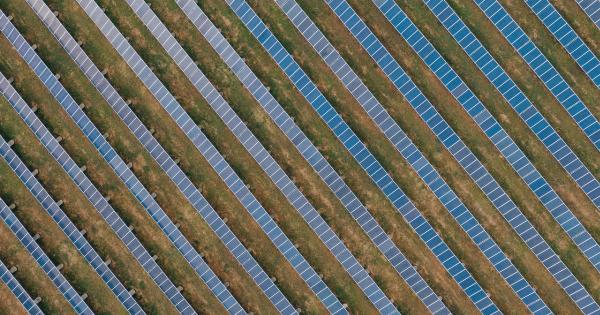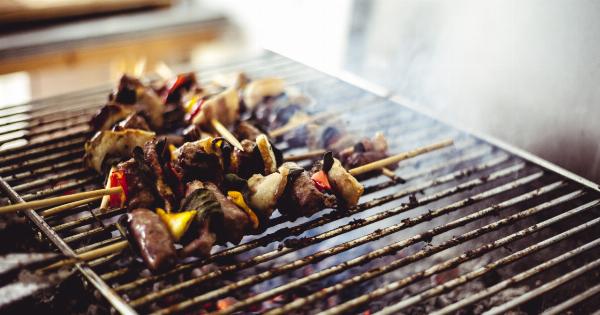Nothing can beat the taste and benefits of fresh fruits and vegetables. However, keeping them fresh can be a challenge. Inadequate storage and handling can lead to spoiling, wilting, and loss of nutrients.
It’s disappointing to buy fresh produce only to discover it has already gone bad. To ensure you get the most out of your fruits and vegetables, you need to follow some basic rules for keeping them fresh.
: 30 Tips for Keeping Your Fruits and Vegetables Fresh
: 1. Wash and Dry
Before storing your fruits and vegetables, make sure they are clean and dry. Wash them in cold water and pat them dry with a clean cloth or paper towel. You can also use a salad spinner to dry them off.
: 2. Use the Right Containers
Fruits and vegetables need to be stored in the right containers to maintain their freshness. Use containers with tight-fitting lids or resealable plastic bags. Avoid storing them in open containers or leaving them exposed to the air.
: 3. Store Them Separately
Store fruits and vegetables separately. Fruits produce ethylene gas, which can cause vegetables to spoil quickly.
: 4. Don’t Wash Berries
Don’t wash berries until you’re ready to eat them. Washing them ahead of time can cause them to spoil quickly.
: 5. Keep Them Cool
Fruits and vegetables should be stored in a cool, dry place. The ideal temperature is between 35 and 45 degrees Fahrenheit. Keep them away from direct sunlight, heat sources, and moisture.
: 6. Keep Them Moist
Some fruits and vegetables need to be stored in a humid environment to keep them fresh. Apples, carrots, and celery can be stored in a plastic bag with a damp paper towel to maintain their moisture.
: 7. Handle with Care
Be gentle when handling fruits and vegetables to avoid bruising or damage. Bruising can cause them to spoil quickly.
: 8. Use the Crisper Drawer
The crisper drawer in your refrigerator is designed to keep fruits and vegetables fresh. It has adjustable humidity settings that can help keep them moist or dry depending on the type of produce.
: 9. Don’t Keep Vegetables Wrapped
Don’t wrap vegetables in plastic wrap. This can cause them to sweat and spoil quickly.
: 10. Store Potatoes and Onions Separately
Store potatoes and onions separately. They both emit moisture and gases that can cause the other to spoil faster.
: 11. Don’t Store Fruits and Vegetables Together
Don’t store fruits and vegetables together. Fruits produce ethylene gas that can cause many vegetables to spoil quickly.
: 12. Separate Leafy Greens
Leafy greens like lettuce and spinach should be stored separately from other vegetables. They need to be kept in a dry, cool place.
: 13. Handle Avocados with Care
Handle avocados with care. They are delicate and can bruise easily.
: 14. Store Mushrooms in a Paper Bag
Mushrooms should be stored in a paper bag, not a plastic bag. This allows them to breathe and prevents them from becoming slimy.
: 15. Store Tomatoes at Room Temperature
Tomatoes should be stored at room temperature, not in the refrigerator. The cold temperature can cause them to lose their flavor and texture.
: 16. Store Citrus Fruits at Room Temperature
Citrus fruits like oranges and lemons should be stored at room temperature. They will last longer and taste better.
: 17. Freeze Excess Fruits and Vegetables
If you have excess fruits and vegetables, you can freeze them for later use. This will help prevent waste and ensure you always have fresh produce on hand.
: 18. Store Garlic and Onions in a Cool, Dry Place
Garlic and onions should be stored in a cool, dry place. A pantry or cupboard is a good place to keep them.
: 19. Use a Produce Keeper
A produce keeper is a container that is designed to keep fruits and vegetables fresh. It has an adjustable vent that can control the humidity level inside the container.
: 20. Don’t Store Apples with Other Fruits
Apples should be stored separately from other fruits. They produce a lot of ethylene gas, which can cause other fruits to ripen and spoil too quickly.
: 21. Use a Lemon to Keep Avocados Fresh
Use a lemon to keep avocados fresh. Cut a lemon in half and rub it on the avocado flesh. This will help prevent the avocado from turning brown.
: 22. Don’t Store Vegetables in the Door of the Refrigerator
Don’t store vegetables in the door of the refrigerator. The temperature fluctuates too much, which can cause the vegetables to spoil quickly.
: 23. Store Berries in a Single Layer
Berries should be stored in a single layer in a shallow container. This will help prevent them from getting crushed and spoiling.
: 24. Store Root Vegetables in a Dark Place
Root vegetables like potatoes and carrots should be stored in a dark place. Light can cause them to sprout and spoil quickly.
: 25. Don’t Store Bananas in the Refrigerator
Don’t store bananas in the refrigerator. The cold temperature can cause them to turn black and lose their flavor.
: 26. Trim the Tops Off Carrots
Trim the tops off carrots before storing them. The tops can draw moisture away from the carrot and cause it to wilt.
: 27. Store Grapes in the Refrigerator
Grapes should be stored in the refrigerator. This will help extend their shelf life.
: 28. Keep Mushrooms Dry
Keep mushrooms dry. Wipe them off with a damp cloth if necessary and store them in a paper bag.
: 29. Store Broccoli in the Refrigerator
Broccoli should be stored in the refrigerator. It will stay fresh for up to a week.
: 30. Don’t Store Melons Next to Other Fruits
Don’t store melons next to other fruits. They produce a lot of ethylene gas, which can cause the other fruit to spoil quickly.
: Conclusion
By following these 30 tips, you can keep your fruits and vegetables fresh and delicious for longer. Remember to wash and dry your produce, store them in the right containers, keep them cool and moist, and handle them with care.
With a little bit of effort, you can enjoy the many benefits of fresh produce while minimizing waste.






























